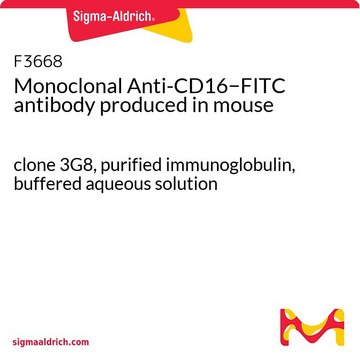1.15500
Acetonitrilo
≥90% (HPLC), for preparative purposes, synthesis, cleaning, extraction and analytical purposes, EMPLURA®
Sinónimos:
ACN, Cianometano, Cianuro de metilo, Nitrilo de etilo
About This Item
for synthesis
synthesis grade
food and beverages
industrial qc
pharmaceutical
97 hPa ( 20 °C)
Productos recomendados
Nombre del producto
Acetonitrilo, for preparative purposes, for extraction, EMPLURA®
grade
for extraction
for synthesis
synthesis grade
Quality Level
100
200
vapor density
1.41 (vs air)
vapor pressure
72.8 mmHg ( 20 °C)
97 hPa ( 20 °C)
description
for analytical purposes
product line
EMPLURA®
assay
≥90% (HPLC)
form
liquid
autoignition temp.
524 °C
973 °F
expl. lim.
16 %
manufacturer/tradename
Calbiochem®
dilution
(low-cost alternative, for basic applications)
impurities
≤0.00016 meq/g Acidity
≤0.5% Water
evapn. residue
≤0.005%
refractive index
n20/D 1.344 (lit.)
bp
81-82 °C (lit.)
mp
−45 °C (lit.)
transition temp
flash point 2 °C
density
0.786 g/mL at 25 °C (lit.)
application(s)
environmental
food and beverages
industrial qc
pharmaceutical
format
neat
shipped in
ambient
storage temp.
−20°C
SMILES string
CC#N
InChI
1S/C2H3N/c1-2-3/h1H3
InChI key
WEVYAHXRMPXWCK-UHFFFAOYSA-N
¿Está buscando productos similares? Visita Guía de comparación de productos
General description
Application
- Electroanalysis and Spectroelectrochemistry: Acetonitrile is widely used in electroanalysis and spectroelectrochemistry due to its excellent solvent properties and compatibility with a variety of electrodes. Recent research has demonstrated its use in the electroanalysis of nonaromatic explosives in the presence of dissolved oxygen. This application enhances the sensitivity and accuracy of detecting explosive compounds, which is critical for environmental monitoring and safety assessments (Holubowitch et al., Analytical Chemistry, 2020).
- Chromatographic Separation of Anthocyanins: Acetonitrile is a preferred solvent in high-performance liquid chromatography (HPLC) for the separation of anthocyanins and other phenolic compounds. Studies have explored the selectivity control of anthocyanin separation by replacing acetonitrile with methanol in the mobile phase, highlighting the solvent′s role in optimizing chromatographic conditions for improved resolution and detection sensitivity (Deineka et al., Journal of Analytical Chemistry, 2021).
- Peroxyoxalate Chemiluminescence Detection: Acetonitrile is used in peroxyoxalate chemiluminescence for the detection of α-amino acids. The solvent′s ability to form stable mixed solutions with water and ethyl acetate enhances the chemiluminescence reaction, allowing for sensitive and selective detection of amino acids in various samples. This application is essential for biochemical and clinical analyses (Kan et al., American Journal of Analytical Chemistry, 2020).
- Electrochemical Detection of DNA Modifications: Acetonitrile is utilized in electrochemical methods for detecting DNA modifications, such as 5-formyluracil. The solvent′s role in stabilizing the (2-benzimidazolyl) acetonitrile labeling reaction enhances the selectivity and sensitivity of detecting DNA modifications, which is crucial for genomic and biomedical research (Tang et al., Analytical Chemistry, 2021).
- Alternative Solvent in Chromatography: Research has investigated replacing acetonitrile with ethanol in reversed-phase HPLC for determining anthocyanins. This substitution aims to maintain chromatographic performance while reducing the environmental impact and costs associated with acetonitrile use. The findings demonstrate the feasibility of using ethanol as a greener alternative without compromising analytical quality (Deineka et al., Journal of Analytical Chemistry, 2023).
Warning
Analysis Note
Identity (IR): conforms
Acidity: ≤ 0.00016 meq/g
Density (d 20 °C/ 4 °C): 0.782 - 0.783
Evaporation residue: ≤ 0.005 %
Water: ≤ 0.5 %
Legal Information
signalword
Danger
Hazard Classifications
Acute Tox. 4 Dermal - Acute Tox. 4 Inhalation - Acute Tox. 4 Oral - Eye Irrit. 2 - Flam. Liq. 2
Storage Class
3 - Flammable liquids
wgk_germany
WGK 2
flash_point_c
2.0 °C - closed cup
Certificados de análisis (COA)
Busque Certificados de análisis (COA) introduciendo el número de lote del producto. Los números de lote se encuentran en la etiqueta del producto después de las palabras «Lot» o «Batch»
¿Ya tiene este producto?
Encuentre la documentación para los productos que ha comprado recientemente en la Biblioteca de documentos.
Nuestro equipo de científicos tiene experiencia en todas las áreas de investigación: Ciencias de la vida, Ciencia de los materiales, Síntesis química, Cromatografía, Analítica y muchas otras.
Póngase en contacto con el Servicio técnico





